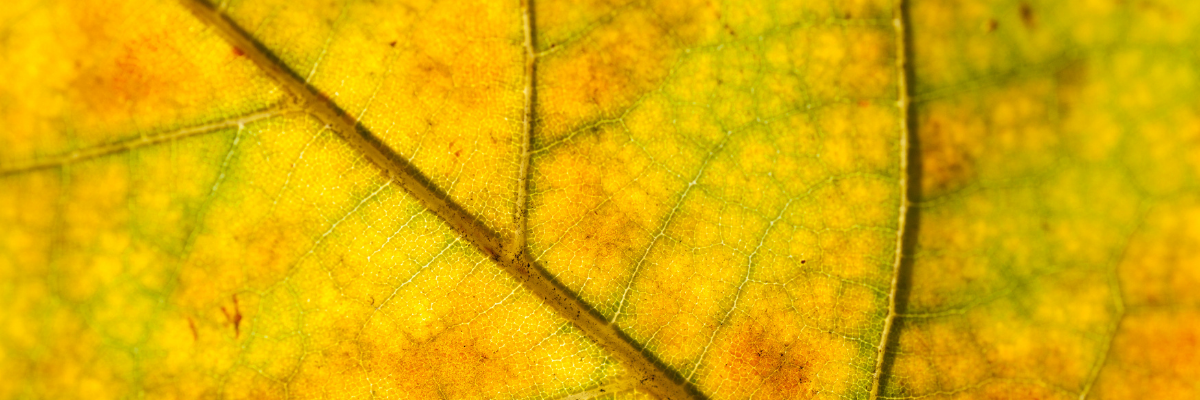Forest Genetic Resources Working Group

Genetic diversity provides the fundamental basis for the evolution of forest trees and the potential for adaptation to change. Loss of genetic resources is threatened by a variety of causes, most relating to the demands of a burgeoning human population. These losses could occur on the very brink of an era when genetic resources are most needed and more valuable than ever. Movement of forest genetic resources, both at the species and the population level, may be necessary to counter environmental change and provide for sustainable development. Forest genetic resources are critical to breeding programs designed to address economic and ecological challenges. Conservation and management of forest genetic resources, however, has received little support except for a few of the most valuable commercial species.
Mission: To generate and share knowledge that is crucial for the conservation and sustainable use of North American forest genetic resources to the benefit of present and future generations.
- To promote the collection, exchange, and dissemination of information about forest genetic resources so that in situ and ex situ programs of conservation and sustainable use are based on sound scientific knowledge;
- To promote cooperation and coordinate research, conservation, training, and knowledge exchange among member countries on genetic resource conservation problems;
- To facilitate the international exchange of forest genetic resources for research and conservation purposes;
- To encourage and promote genetic improvement programs for important commercial forest species as a component of forest conservation and as a contribution to the economic welfare of North Americans.
- Increased awareness of the role of genetic diversity for the sustainable management of forest ecosystems and their resiliency;
- Guidelines and recommendations for specific actions like seed source transfer,
- Specific tools for decision makers and forest managers,
- Publications,
- Training sessions.
- Increased awareness of climate change threats on forest genetic resources;
- Guidelines for assisted migration,
- Model scenarios,
- Conferences,
- Training sessions.
- Information on North American forest genetic resources to international organizations;
- Contribute to FAO’s integration of the State of the World’s Forest Genetic Resources,
- Contribute to other Regional Networks on conservation of forest genetic resources [eg ConFORGen, LAFORGEN (Latin America Forest Genetic Resources Network), etc.].
The FGRWG was established by the NAFC in 1961 and held its inaugural meeting in 1965 as the Working Group on Forest Tree Improvement. It became the Working Party on Forest Tree Improvement in 1966, and was changed to the Study Group on Tree Improvement by the NAFC in 1970. In 1993 the name was changed by vote of the delegates to Forest Genetic Resources Working Group and approved by the NAFC to better reflect the group’s long-term focus.

Dr. Sally Aitken
Department of Forest and Conservation Sciences
University of British Columbia
Dr. Elizabeth Campbell
Canadian Forest Service
Natural Resources Canada

Dr. J. Jesús Vargas Hernández
ProgramaForestal – IRENAT
Colegio de Postgraduados
Dr. Cuauhtémoc Sáenz Romero
Instituto de Investigaciones
Agropecuarias y Forestales
Universidad Michoacana de
San Nicolas de Hidalgo
Ramon Silva Flores
Comisión Nacional Forestal

Jessica W. Wright
USDA Forest Service
Dr. Kurt H. Johnsen
Southern Research Station
USDA Forest Service
Dr. Bryce Richardson
Rocky Mountain Research Station
USDA Forest Service
Tasks: As of the last meeting, the following tasks were active:
- Task 38. To maintain and update a website to broaden contacts and improve communications about the activities of the Forest Genetic Resources Working Group.
- Task 44. To create a bibliography with abstracts of undergraduate and graduate dissertations on the genetics, ecology, and biogeography of Mexican woody and semi-woody species and the plant communities in which they occur, and make the information available on the Internet.
- Task 51. To review the literature and rate the vulnerability of forest genetic resources to climate change.
- Task 54. To develop guidelines for assisted migration of forest species and populations in response to climate change.
- Task 56: To develop ex situ conservation guidelines for species at most risk of extirpation from climate change.
- Task 57. Contribute to the activities toward meeting the forest genetic resources goals of the FAO’s Global Plan of Action for Forest Genetic Resources (http://www.fao.org/forestry/fgr/92064/en/ ), and the State of the World’s Forest Genetic Resources initiative in North America (http://www.fao.org/forestry/fgr/64582/en/)
- Task 58. Develop provisional climate-based seed zones for Mexico for contemporary and future climates.
- Task 59. Contribute to the web-based Seedlot Selection Tool to facilitate matching seedlots and planting sites for current and future climates in North America.
- Task 60. Share plant material and expertise to contribute to the CoAdapt Tree project based at the University of British Columbia.
- Task 61. Develop reforestation guidelines for Abies religiosa and Pinus pseudostrobus to mitigate climate change effects inside the Monarch Butterfly Reserve.
- Task 62: Develop scenario model linking landscape-level adaptation strategies and genetics with other broad-scale processes.
The FGRWG identifies tasks relevant to its objectives and assigns a task force to accomplish the aims of the task. Each task force is appointed by the chairperson and usually includes one representative from each of the three member nations. Accomplishments are evaluated during the Working Group’s periodic meetings. Tasks are either continued until completed, or terminated if further progress seems unlikely. The Working Group provides the NAFC with a two-year work plan and accounts for its actions with activity reports.
Other Activities:
- Ongoing studies of Mexican spruces, pines, and Douglas-firs.
- Coordinating a comprehensive study of North America’s piñon pines.
- Creating an annotated bibliography of undergraduate and graduate dissertations from Mexican universities
on genetics, ecology, and biogeography of forest trees, and preparing it for the Web. - Publishing a series of lecture notes on forest conservation
genetics in Spanish and English.
Major Accomplishments:
Initiated the first World Directory of Forest Geneticists and Tree Breeders in 1965. This was revised and published by IUFRO in 1977, and again in 1998 by the US Forest Service.
- Supported the establishment of the first forest genetics research
facility in México, the Centro de Genética Forestal, in Chapingo and Veracruz in 1985. - Launched and coordinated genetic surveys of several Mexican conifers, including Picea chihuahuana, Picea martinezii, Picea mexicana, Pinus ayacahuite, Pinus strobiformis, Pinus maximartinezii, and Pinus pinceana.
- Provided training opportunities for nine Mexican scientists and students at research facilities in the United States during the last 10 years.
- Conducted training courses in various aspects of forest genetics
at San Cristobal de las Casas 1980; Durango 1984; Chapingo (1990,1995); Placerville 1993. - Promoted the exchange of information among FGRSG members and observers through meetings and study tours.
- Organized an international Workshop on North American Temperate Forest Genetic Resources (Berkeley, California, June 11-15, 1995). The Workshop included participants from 13 countries in Africa, Asia, the Austral-Pacific,
Europe, and South America (where North American species are grown as exotics), as well as delegates from Canada, México, and the United States. - Organized the first North American Forest Biology Workshop to be held in Mexico, convened in Merida, Yucatan from July 17-21, 2000.
- Organized a symposium in memory of Dr. Basilio Bermejo Velázquez
on “Use and Conservation of Forest Genetic Resources” in Jalapa, Veracruz, November 5, 2002. - Organized an international symposium entitled “Silviculture and the Conservation of Genetic Resources for Sustainable Forest Management” as a satellite to the XII World Forestry Congress in Québec, Québec, Canada on September 21, 2003.
- Organized a symposium entitled “Potential Effects of Global Warming on Silviculture and Genetic Resources” at University of Michoacán, Morelia, Michoacán, México, on October 18, 2004.
- Conducted a training course in “Seed Management and Forest Plant Production for Conservation and Genetic Improvement” at the CEFOFOR-CONAFOR Center , Guzmán, Jalisco, México, on March, 31, 2006 .
- Major publications as products of the tasks :
- Eguiluz P., T. (ed.). 1984. XIV Reunión del Grupo de Mejoramiento Genético Forestal, ciclo de conferencias. Comisíon Forestal de América del Norte, Durango, Durango, México, del 9 al 12 de octubre 1984. 170 pp. [articles in Spanish or English]
- Eguiluz P., T. (ed.). 1985. North American Forestry Commission Tree Improvement Study Group Proceedings: “The State of the Art in Forest Genetics and Breeding”. International meeting satellite to the IX World Forestry Congress, México City , México. 143 pp. [articles in Spanish or English]
- Eguiluz P., T. 1988. Glosario de Términos de Genética y Mejoramiento Genético Forestal. Boletín Técnico No. 2, Centro de Genética Forestal, A.C., Chapingo, México. 59 pp. [English to Spanish]
- Rogers, D. L. and F. T. Ledig (eds.). 1996. The Status of Temperate North American Forest Genetic Resources. Report No. 15, Genetic Resources Conservation Program, University of California , Davis , California . [in English] Available from http://www.grcp.ucdavis.edu/publications/index.htm
- Vargas H., J., B. Bermejo V., and F. T. Ledig (eds.). 1997. Manejo de Recursos Genéticos Forestales. Instituto de Recursos Naturales, Colegio de Postgraduados en Ciencias Agricolas, Montecillo, México, México. [in Spanish]
- Ledig, F. T., V. Jacob C., P. D. Hodgskiss, and T. Eguiluz P. 1997. Recent evolution and divergence among populations of a rare Mexican endemic, Chihuahua spruce, following Holocene warming. Evolution 51: 1815-1827. Available from: http;//treesearch.fs.fed.us/pubs/24281
- Ledig, F. T. And D. B. Neale (compilers). 1998. World Directory of Forest Geneticists and Tree Breeders. General Technical Report PSW-GTR-170, Pacific Southwest Research Station , US Forest Service, Albany , California . Available from: http://treesearch.fs.fed.us/pubs/28857
- Ledig, F. T., J. J. Vargas H., and K. H. Johnsen. 1998. The conservation of forest genetic resources: case histories from Canada , Mexico , and the United States . Journal of Forestry 96(1): 32-41. Available from: http://treesearch.fs.fed.us/pubs/24342
- Ledig, F. T., M. T. Conkle, B. Bermejo V., T.Eguiluz P., P. D. Hodgskiss, D. R. Johnson, and W. S. Dvorak. 1999. Evidence for an extreme bottleneck in a rare Mexican pinyon: genetic diversity, disequilibrium, and the mating system in Pinus maximartinezii. Evolution 53: 91-99. Available from: http://treesearch.fs.fed.us/pubs/24286
- Ledig, F.T., B.Bermejo-V, P.D. Hofgkiss, D.R. Johnson, C.Flores-L., and V. Jacob-C. 2000. The mating system and genic diversity in Martinez spruce, an extremely rare endemic of Mexico ‘s Sierra Madre Oriental : an example of facultative selfing and survival in interglacial refugia. Canadian Journal of Forest Research 30:1156-1164. Available from: http://treesearch.fs.fed.us/pubs/24294
- Ledig, F.T., M. Mapula-L., B. Bermejo-V., V. Reyes-H., C. Flores-L. and M.A. Capo-A. 2000. Locations of endangered spruce populations in Mexico and the demography of Picea chihuahuana. Mandrono 47: 71-88. Available from F.T. Ledig, Institute of Forest Genetics, 2480 Carson Road , Placerville , CA 9566. ( tledig@ucdavis.edu)
- Ledig, F.T., M.A. Capo-A., P.D. Hodgskiss, H. Sbay, C. Flores-L., M.T. Conkle and B. Bermejo-V. 2001. Genetic diversity and the mating system of a rare Mexican pinon, Pinus pinceana, and a comparison with Pinus maximartinezii (Pinaceae). American Journal of Botany 88: 1877-1987. Available from: http://treesearch.fs.fed.us/pubs/24297
- Ledig, F.T., P.D. Hodgskiss and V. Jacob-Cervantes. 2002. Genic diversity, mating system, and conservation of a Mexican subalpine relict, Picea mexicana MartRnez. Conservation Genetics 3: 113-122. Available from: http://treesearch.fs.fed.us/pubs/24299
- Sáenz-Romero, C., Snively, A. and Lindig-Cisneros, R. 2003. Conservation and restoration of pine forest genetic resources in México. Silvae Genetica 52 (5-6):233-237. Available from : Cuauhtémoc Sáenz-Romero, Instituto de Investigaciones Agropecuarias y Forestales, Universidad Michoacana de San Nicolás de Hidalgo (IIAF-UMSNH), Km 9.5 carretera Morelia-Zinapecuaro, Tarímbaro Michoacán 58330, México, (csaenzromero@gmail.com )
- Sáenz-Romero, C. and Tapia-Olivares, B. L. 2003. Pinus oocarpa isoenzymatic variation along an altitudinal gradient in Michoacán, México. Silvae Genetica 52 (5-6): 237-240. Available from : Cuauhtémoc Sáenz-Romero, Instituto de Investigaciones Agropecuarias y Forestales, Universidad Michoacana de San Nicolás de Hidalgo (IIAF-UMSNH), Km 9.5 carretera Morelia-Zinapecuaro, Tarímbaro Michoacán 58330, México, csaenzromero@gmail.com
- Ledig, F.T., P.D. Hodgskiss, K.V. Krutovskii, D.B. Neale and T. Eguiluz-Piedra. 2004. Relationships among the Spruces (Picea, Pinaceae) of Southwestern North America . Syst. Bot. 29(2): 275-295. Available from: http://treesearch.fs.fed.us/pubs/24306
- Vargas H., J., B. Bermejo V., and F.T. Ledig (eds.) 2004. Manejo de Recursos Genéticos Forestales. Segunda Edición. Colegio de Postgraduados, Motecillo, Edo. de México, y Comisión Nacional Forestal, Zapopan, Jalisco, México. Available from : Programa Forestal, Colegio de Postgraduados, Montecillo, Edo. de México, 56230, México ( vargashj@colpos.mx )
- Viveros-Viveros, H., Sáenz-Romero, C., López-Upton, J. and Vargas-Hernández, J. J. 2005. Altitudinal genetic variation in plant growth of Pinus pseudostrobus Lindl. in field testing. Agrociencia 39(5):575-587. Available from : Cuauhtémoc Sáenz-Romero, Instituto de Investigaciones Agropecuarias y Forestales, Universidad Michoacana de San Nicolás de Hidalgo (IIAF-UMSNH), Km 9.5 carretera Morelia-Zinapecuaro, Tarímbaro Michoacán 58330, México, csaenzromero@gmail.com
- Sáenz-Romero, C., Guzmán-Reyna, R. and Rehfeldt, G.E. 2006. Altitudinal genetic variation among Pinus oocarpa populations in Michoacán, México; implications for seed zoning, conservation of forest genetic resources, tree breeding and global warming. Forest Ecology and Management 229:340-350. Available from : Cuauhtémoc Sáenz-Romero, Instituto de Investigaciones Agropecuarias y Forestales, Universidad Michoacana de San Nicolás de Hidalgo (IIAF-UMSNH), Km 9.5 carretera Morelia-Zinapecuaro, Tarímbaro Michoacán 58330, México, csaenzromero@gmail.com
- Jaramillo-Correa, J.P., J. Beaulieu, F.T. Ledig, and J. Bousquet. 2006. Decoupled mitochondrial and chloroplast DNA populati on structure reveals Holocene collapse and population isolation in a threatened Mexican-endemic conifer. Available from: J. Beaulieu, Canadian Wood Fibre Centre, 1055 du P.E.P.S., Quebec, Quebec, Canada G1V 4C7 by (Jean.Beaulieu@NRCan.gc.ca).
- Sáenz-Romero C., G. E. Rehfeldt, N. L. Crookston, P. Duval, J. Beaulieu. 2009. Estimaciones de cambio climático para Michoacán: Implicaciones para el sector agropecuario y forestal y para la conservación de la Mariposa Monarca. Cuadernos de Divulgación Científica y Tecnológica del Consejo Estatal de Ciencia y Tecnología de Michoacán C+Tec. Serie 3, cuaderno número 28. Available from : Cuauhtémoc Sáenz-Romero, Instituto de Investigaciones Agropecuarias y Forestales, Universidad Michoacana de San Nicolás de Hidalgo (IIAF-UMSNH), Km 9.5 carretera Morelia-Zinapecuaro, Tarímbaro Michoacán 58330, México, csaenzromero@gmail.com
- Sáenz-Romero C., G. E. Rehfeldt, N. L. Crookston, P. Duval, R. St-Amant, J. Beaulieu, B. A. Richardson. 2010. Spline models of contemporary, 2030, 2060 and 2090 climates for Mexico and their use in understanding climate-change impacts on the vegetation. Climatic Change 102:595–623. Available from : Cuauhtémoc Sáenz-Romero, Instituto de Investigaciones Agropecuarias y Forestales, Universidad Michoacana de San Nicolás de Hidalgo (IIAF-UMSNH), Km 9.5 carretera Morelia-Zinapecuaro, Tarímbaro Michoacán 58330, México, csaenzromero@gmail.com
- Martiñón-Martínez, R.J., J.J. Vargas-Hernández, J. López-Upton, A-Gómez-Guerrero, H. Vaquera-Huerta. 2010. Response of Pinus pinceana Gordon to drought and high temperature stress. Rev. Fitotec. Mex. 33: 239-248. Available from : Programa Forestal, Colegio de Postgraduados, Montecillo, Edo. de México, 56230, México ( vargashj@colpos.mx )
- Ledig, F.T. G. E. Rehfeldt, C. Sáenz-Romero , and C. Flores-López. 2010. Projections of suitable habitat for rare species under global warming scenarios. American Journal of Botany 97:970-987.
- Sáenz-Romero, C., Ruiz-Talonia, L.F., Beaulieu, J., Sánchez-Vargas, N.M. and Rehfeldt, G.E. 2011. Genetic variation among Pinus patula populations along an altitudinal gradient. Two environment nursery tests. Revista Fitotecnia Mexicana 34(1):19-25. Available from : Cuauhtémoc Sáenz-Romero, Instituto de Investigaciones Agropecuarias y Forestales, Universidad Michoacana de San Nicolás de Hidalgo (IIAF-UMSNH), Km 9.5 carretera Morelia-Zinapecuaro, Tarímbaro Michoacán 58330, México, csaenzromero@gmail.com
- Wei, X.-X., Beaulieu, J., Khasa, D.P., Vargas-Hernández, J., López-upton, J., Jaquish, B. and Bousquet, J. 2011. Range-wide chloroplast and mitochondrial DNA imprints reveal multiple lineages and complex biogeographic history for Douglas-fir. Tree Genetics & Genomes 7: 1025-1040. Available from: J. Beaulieu, Canadian Wood Fibre Centre, 1055 du P.E.P.S., Quebec, Quebec, Canada G1V 4C7 (Jean.Beaulieu@NRCan.gc.ca)
- Sáenz-Romero, C., Beaulieu, J. and Rehfeldt, G.E. 2011. Altitudinal genetic variation among Pinus patula populations from Oaxaca, México, in growth chambers simulating global warming temperatures. Agrociencia 45: 399-411. Available from : Cuauhtémoc Sáenz-Romero, Instituto de Investigaciones Agropecuarias y Forestales, Universidad Michoacana de San Nicolás de Hidalgo (IIAF-UMSNH), Km 9.5 carretera Morelia-Zinapecuaro, Tarímbaro Michoacán 58330, México, csaenzromero@gmail.com
- Soto-Correa, JC, Sáenz-Romero C., Lindig-Cisneros R, de la Barrera E. 2013. The neotropical shrub Lupinus elegans, from temperate forests, may not adapt to climate change. Plant Biology 15(3):607–610. Available from: csaenzromero@gmail.com
- Sáenz-Romero C, Martínez-Palacios A, Gómez-Sierra JM, Pérez-Nasser N and Sánchez-Vargas NM. 2012. Estimate decoupling of Agave cupreata populations to their suitable habitat due to climate change. Revista Chapingo Serie Ciencias Forestales y del Ambiente 18(3):291-301. Available from: http://www.redalyc.org/articulo.oa?id=62926234003
- Sáenz-Romero C, Rehfeldt GE, Crookston NL, Duval P and Beaulieu J. 2012. Spline models of contemporary, 2030, 2060 and 2090 climates for Michoacán state, México; impacts on the vegetation. Revista Fitotecnia Mexicana 35(4):333-345. Available from:http://forest.moscowfsl.wsu.edu/climate/SaenzRomero_2012_ClimateMichoacan_RFM.pdf
- Soto-Correa JC, Sáenz-Romero C, Lindig-Cisneros R, Sánchez–Vargas NM y Cruz-de-León J. 2012. Genetic variation between Lupinus elegans Kunth provenances, altitudinal seed zoning and assisted migration. Agrociencia 46(6):593-608. Available from: http://www.colpos.mx/agrocien/Bimestral/2012/ago-sep/art-6.pdf
- Rehfeldt, GE, Crookston NL, Sáenz-Romero C, Campbell E. 2012. North American vegetation model for land-use planning in a changing climate: a solution to large classification problems. Ecological Applications 22(1):119-141. Available from: http://treesearch.fs.fed.us/pubs/40382
- Loya-Rebollar E, Sáenz-Romero C, Lindig-Cisneros RA, Lobit P, Villegas-Moreno JA and Sánchez-Vargas NM. 2013. Clinal variation in Pinus hartwegii populations and its application for adaptation to climate change. Silvae Genetica 62(3):86-95. Available from: csaenzromero@gmail.com
- Sáenz-Romero C, Rehfeldt GE, Duval P, Lindig-Cisneros P. 2012. Abies religiosa habitat prediction in climatic change scenarios and implications for monarch butterfly conservation in Mexico. Forest Ecology and Management 275:98-106. Available from: http://www.fs.fed.us/rm/pubs_other/rmrs_2012_saenz_romero_c001.pdf?
- The Status of Temperate North American Forest Genetic Resources, Report No.15
Rogers, D.L. and Ledig, F.T. 1996 - Andalo, C. Beaulieu, J. and Bousquet, J. 2005. The impact of climate change on growth of local white spruce populations in Québec , Canada . Forest Ecology and Management 205: 169-182. Available from: J. Beaulieu, Canadian Wood Fibre Centre, 1055 du P.E.P.S., Quebec , Quebec , Canada G1V 4C7 (Jean.Beaulieu@NRCan.gc.ca )
- Beaulieu, J. and Rainville, A. 2005. Adaptation to climate change: Genetic variation is both a short- and a long-term solution. Forestry Chronicle 81(5): 704-709. Available from: J. Beaulieu, Canadian Wood Fibre Centre, 1055 du P.E.P.S., Quebec , Quebec , Canada G1V 4C7 (Jean.Beaulieu@NRCan.gc.ca)
- St. Clair, J. B. and Howe, G.T. 2007. Genetic maladaptation of coastal Douglas-fir seedlings to future climates. Global Change Biology 13: 1441-1454. Available from: J.B. St. Clair, Pacific Northwest Research Station, USDA Forest Service, 3200 SW Jefferson Way , Corvallis , OR 97331-4401 . ( bstclair@fs.fed.us)
- Jaramillo-Correa, J.P., Beaulieu, J., Khasa, D.P. and Bousquet J. 2009. Inferring the past from the present phylogeographic structure of North American forest trees: seeing the forest for the genes. Canadian Journal of Forest Research 39: 286-307. Available from: J. Beaulieu, Canadian Wood Fibre Centre, 1055 du P.E.P.S., Quebec, Quebec, Canada G1V 4C7 (Jean.Beaulieu@NRCan.gc.ca)
- Sáenz-Romero C, Lamy JP, Loya-Rebollar E, Plaza-Aguilar A, Burlett R, Lobit P and Delzon S. 2013. Genetic variation of drought-induced cavitation resistance among Pinus hartwegii populations from an altitudinal gradient. Acta Physiologiae Plantarum Doi:10.1007/s11738-013-1321-y. Available from: http://link.springer.com/article/10.1007%2Fs11738-013-1321-y
- Sáenz-Romero C, Rehfeldt GE, Soto-Correa JC, Aguilar-Aguilar S, Zamarripa-Morales V, López-Upton J. 2012. Altitudinal genetic variation among Pinus pseudostrobus populations from Michoacán, México; two location shadehouse test results. Revista Fitotecnia Mexicana. 35(2):111-120. Available from: http://www.redalyc.org/articulo.oa?id=61023300003